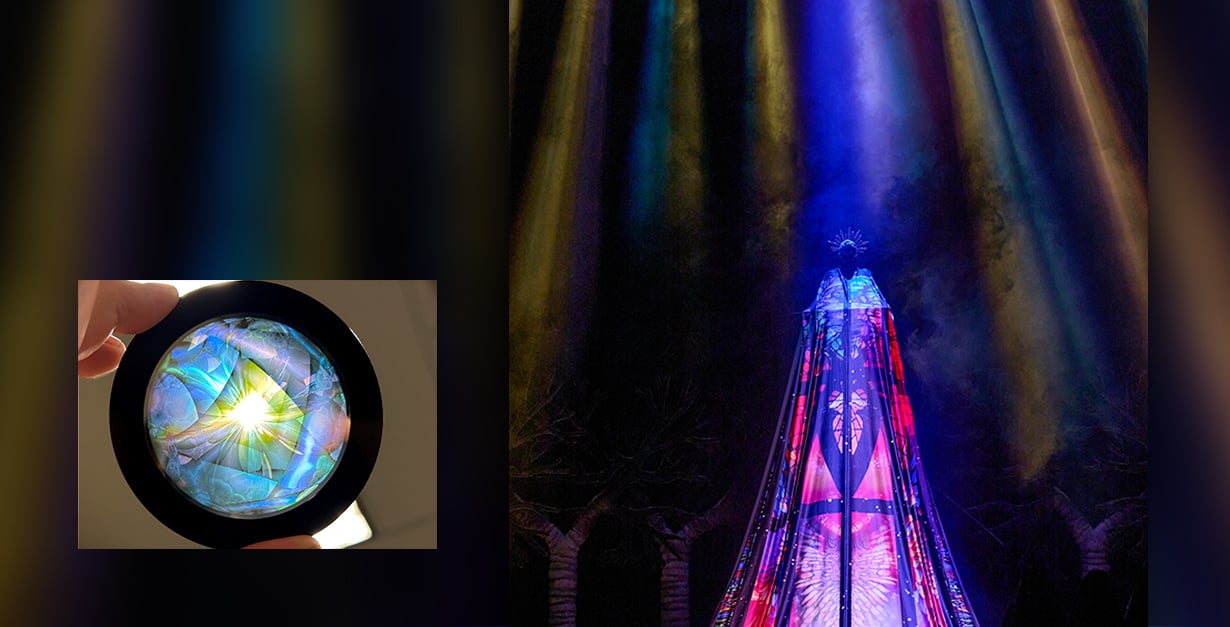Charlie Morgan Jones is a UK-based Lighting Designer and a Rosco Ambassador whose work spans the full theatrical spectrum. For his design of the opera Faust in Toronto last year, he was faced with a unique lighting obstacle. Below, he shares the concept and execution of his design – in his own words – including how he used Rosco Glass Gobos to overcome this challenge.
When we were asked to design a Faust, co-produced between Malmö Opera and Canadian Opera Company, that could tour internationally on only a few trailers we knew we had to be savvy. The set, beautifully and cleverly designed by Emma Ryott, can take us (with the help of lighting) to all the locations we need, be it Faust’s study, Marguerite’s garden, Méphistophélès’ Walpurgis Night, or the City Gates – we could do them all, except for one.
The top of Act III is set in a cavernous cathedral. In our version – the cathedral of Marguerite’s mind – and the one-set-fits-all didn’t quite allow for that. So, how would we do it? There was talk of a huge light-up costume piece, but budget and practicality didn’t allow for that to happen. What we ended up with was – dare I blow our own trumpets? – quite spectacular.
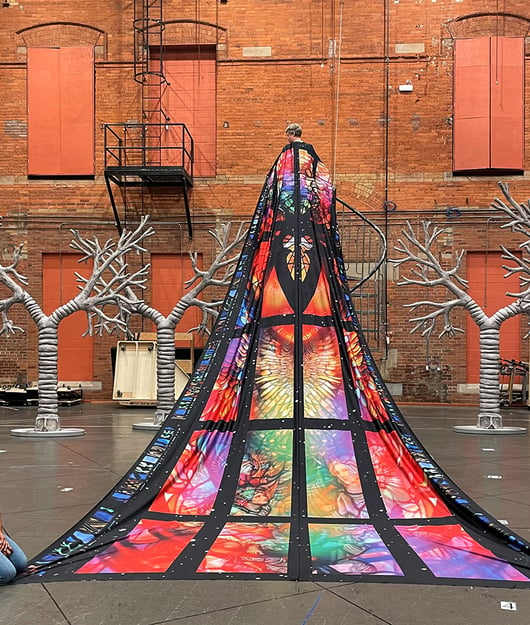
The costume, if we can call it that, was a work of art. A long sweeping cloak from the pulpit centre stage down to the front edge. Designed like a stained glass window, it evoked the emotion of church, rather than the pews and gargoyles of a literal space. The challenge now, was how to light it.

The space had always been wide open, a big back cyc of an X-Ray, which responded to the action on stage; six tree-like bronchial structures that reconfigured for each scene; a chessboard floor; and the most astonishing feat of engineering I’ve ever seen - a staircase-spine centre stage that twisted and turned up to the heavens. Faust’s decaying, dilapidated body. I needed to close it down, to lose all the space (with the ability to immediately restore it all at the end of the scene, so no full blacks, etc.), and still make it feel as though the church was expanding beyond the small scene downstage.
Not often in my case, but in this instance, the answer was…gobos.
Charlie explored four different stage renderings – each with a different Rosco Glass Gobo: #1 = R86727 Chromatic, #2 = R43801 Kaleidoscope, #3 = R86750 Celestial Naissance, #4 = R43808 Patriot
I had this idea that I wanted an epic, theatrical version of a stained-glass window coming in from the heights bearing down onto the scene, and a plan began to form. I asked some pals, who are technically more wizard-y than me, to mockup a basic visualization of 10 lights on a far upstage bar with a choice of four different Rosco Glass Gobos inside. I picked one – R86750 Celestial Naissance – and sent that image to the design team, who all responded very positively! My next task was to place the lanterns.
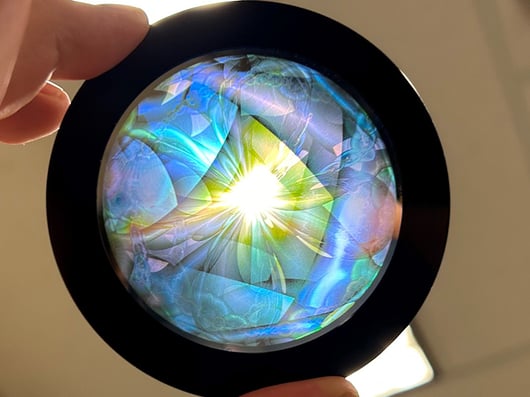
Our whole Faust World is skew-whiff, so straight in like the renders wouldn’t do. I drew some lights on the plan and six months later, still had no clue what to do with them. Thankfully, I had 12 gobos to play with. It wasn’t until the third week of rehearsals when inspiration struck. Suddenly, in the middle of rehearsing that scene, I knew exactly what they needed to do, and how they should be focused.
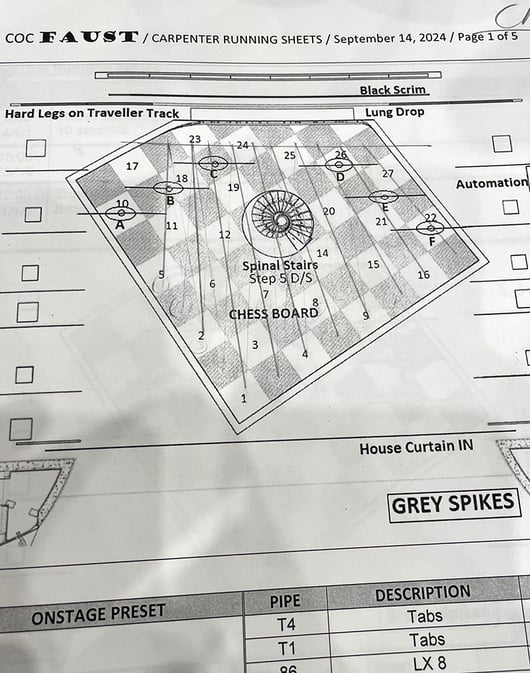
Our wonderful stage management team had printed out amazing cheat sheets for us so we could always see where the revolve and trees were. A few of these cheat sheets were peppered across the desk, so I grabbed one and started to work out where the gobo lights lived and what they could possibly do in the space. A few revisions later, and I had it.

What we ended up with, as the main curtain flew out at a snail’s pace, was nothing short of astonishing. Filled with haze, a huge red swathe of cloth caught your eyes first and as the tabs lifted, chunky beams of light – each focused on a separate square of our checkerboard floor – began to appear. Each beam was also focused to a different area/color of the gobo, which helped it look a little more ‘organic.’ The space, now completely isolated from the big back cyc, looked absolutely enormous, completely endless. It’s not at all how I imagined the scene would look, and somehow, I can’t imagine it looking any differently.
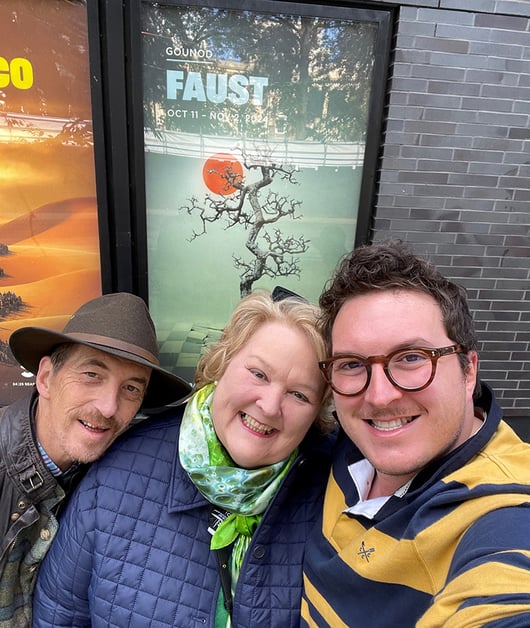
As the General Rehearsal rolled around, my parents came out for a 10-day visit to Toronto. I truly can’t tell you how special that was. Though I was working, it felt suddenly like a holiday with the two best people in my entire world. My Mum’s reaction to the opera, and particularly the top of Act III was visceral. To share that experience, that moment, that lighting with my parents was truly and unequivocally the best moment of my life thus far.
If you’d like to see more examples of Charlie Morgan Jones’ work, visit his website: charliemjones.co.uk, or follow @charliemorganjones on Instagram. If you’d like to explore all of our gobo designs – please browse the Rosco Gobo Catalog.

